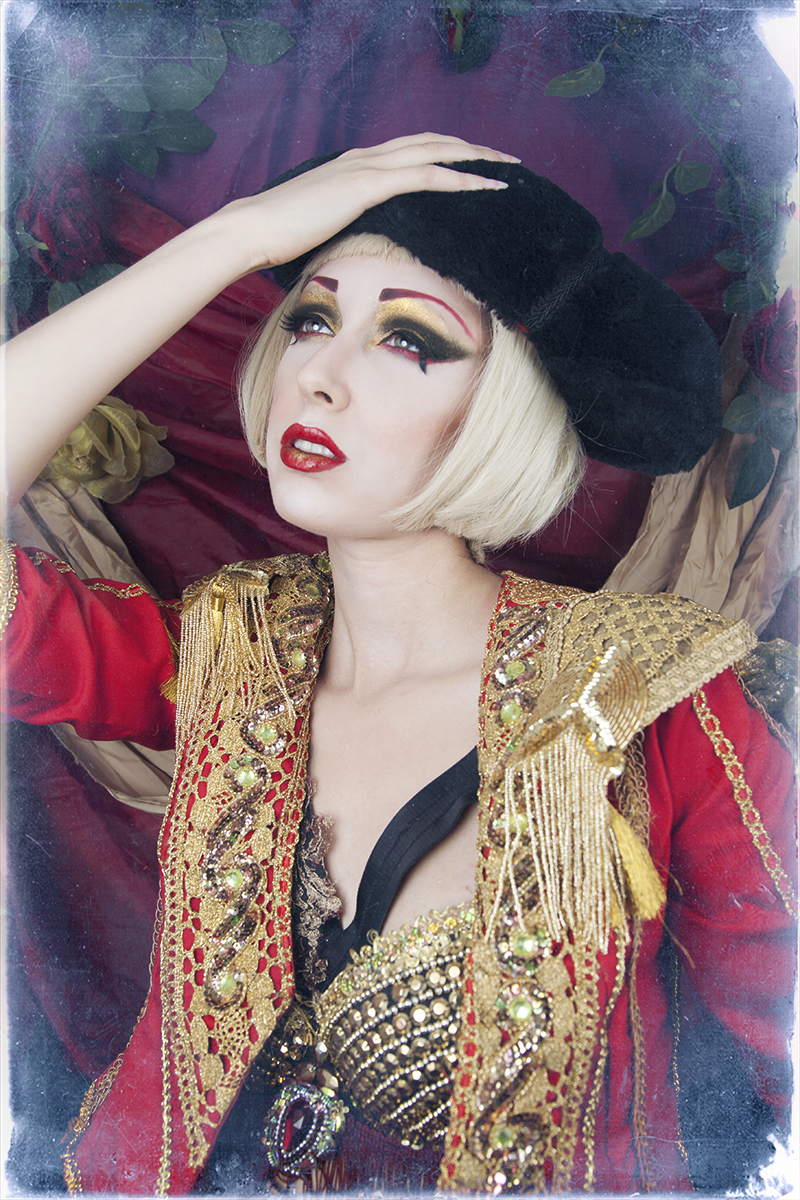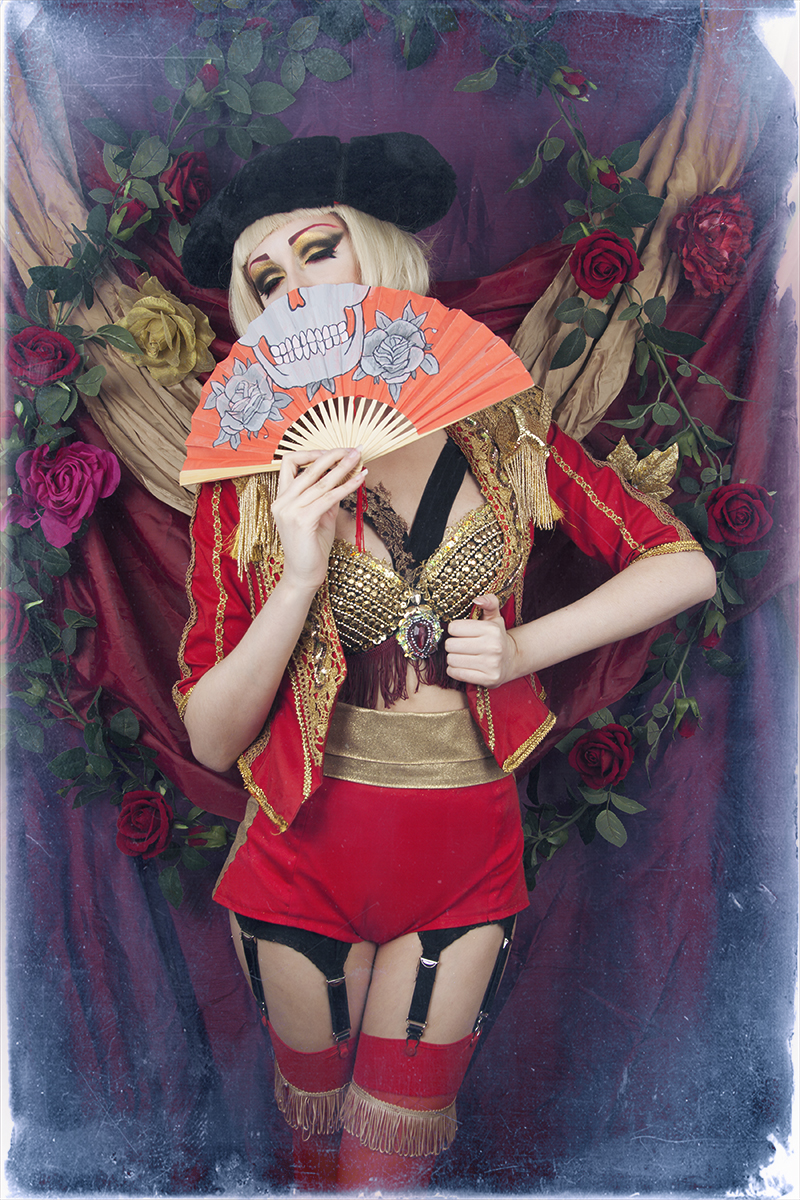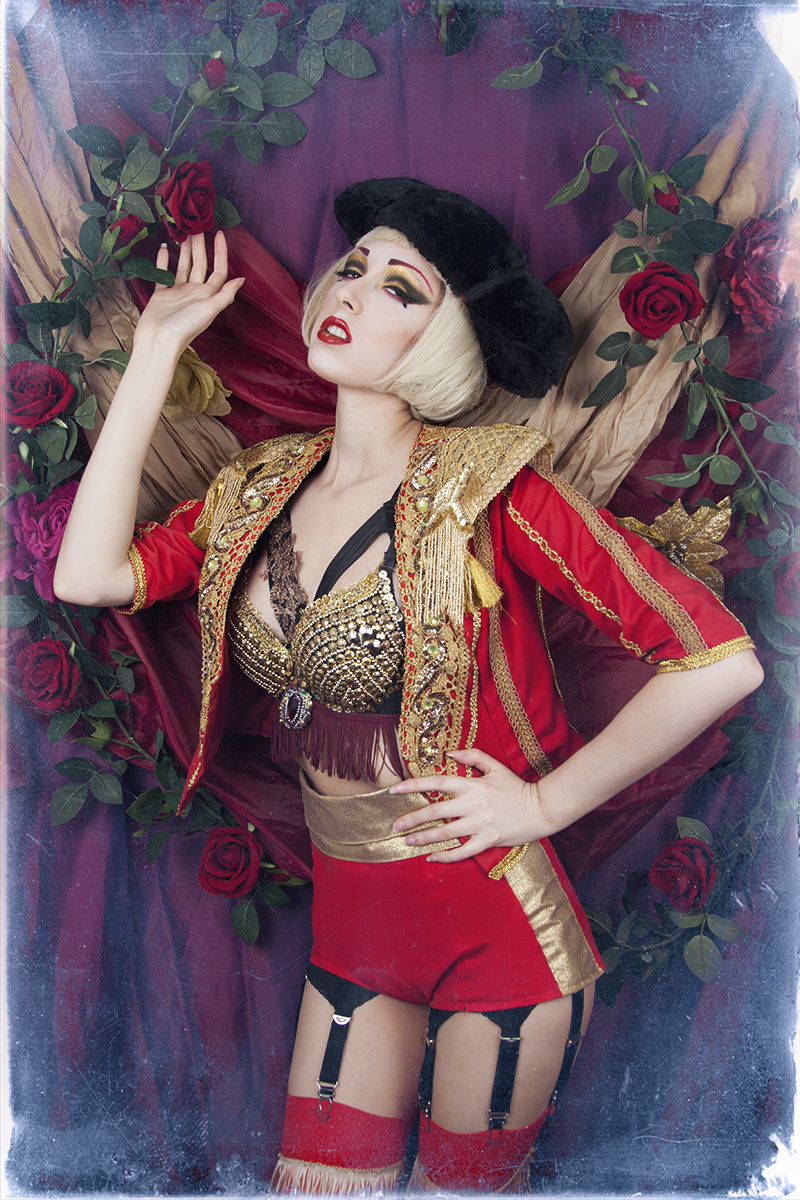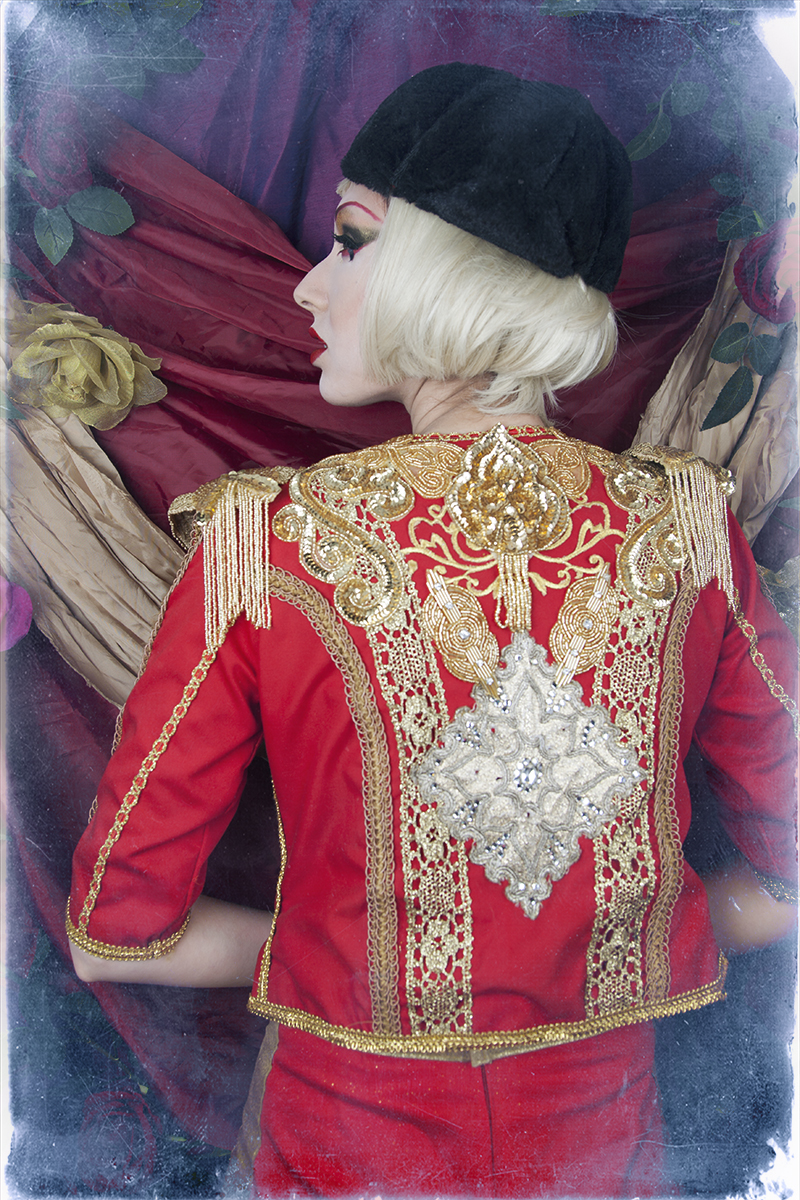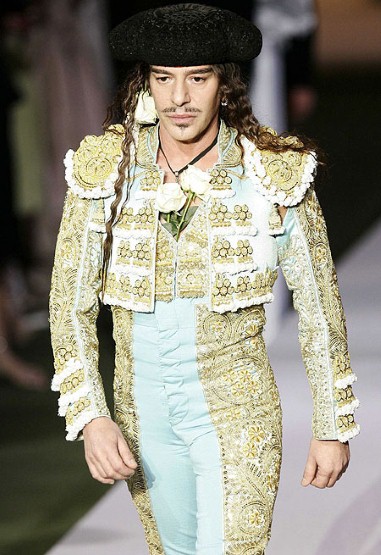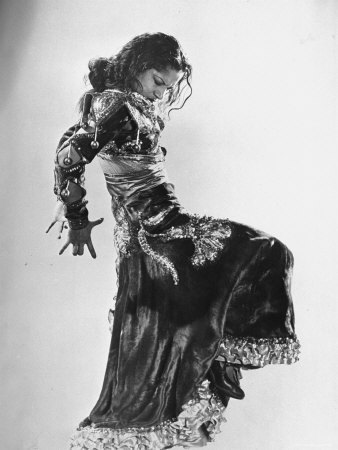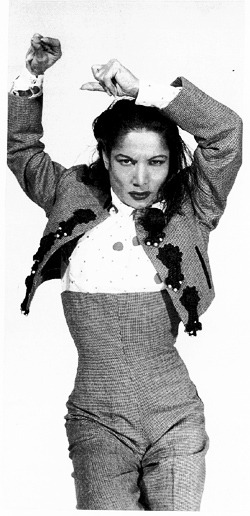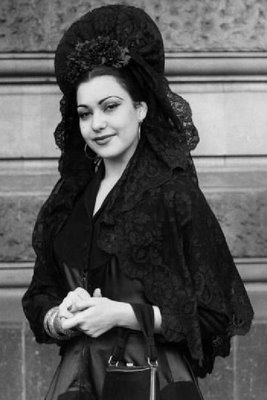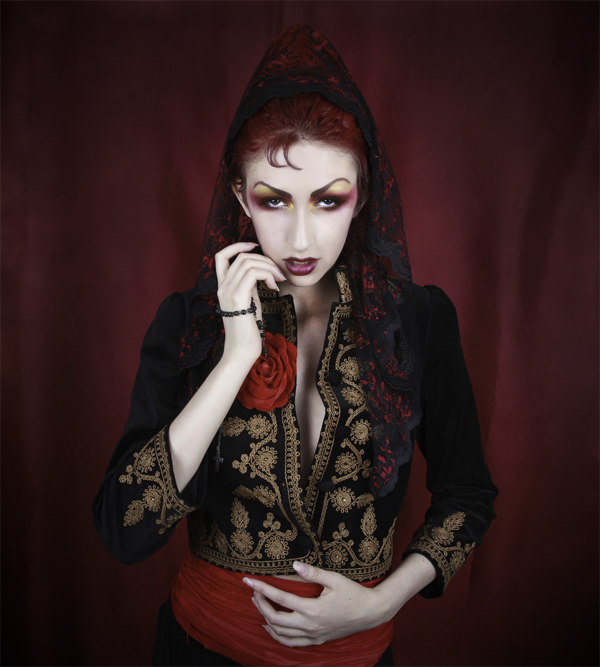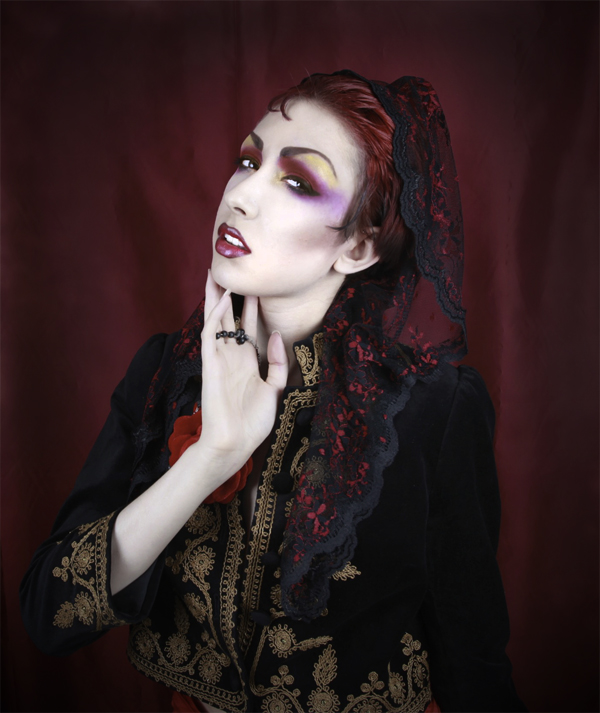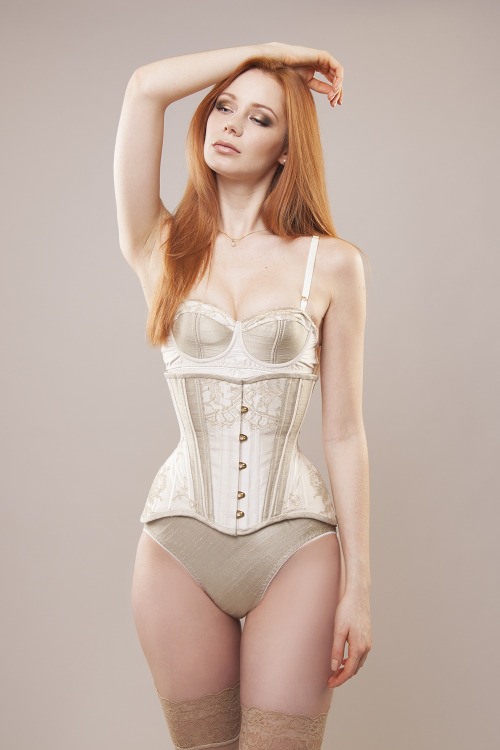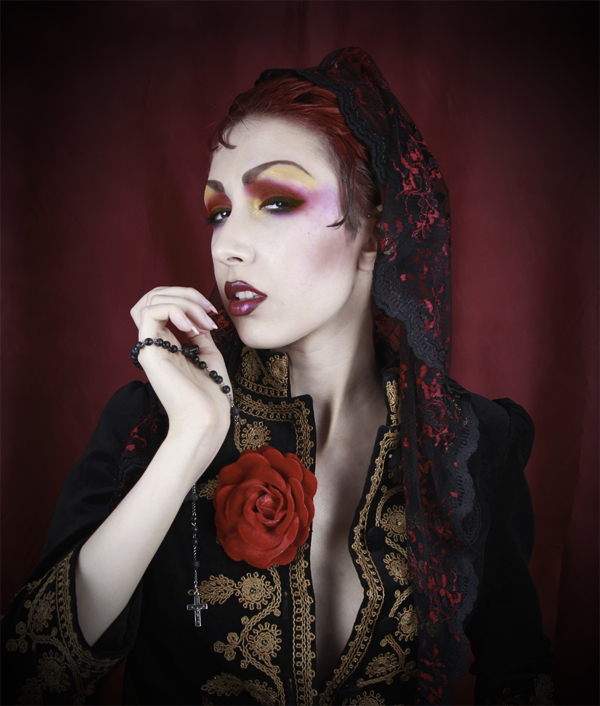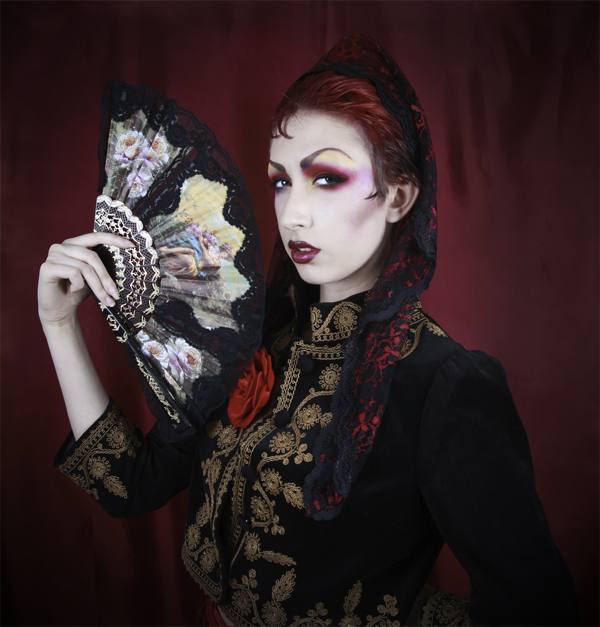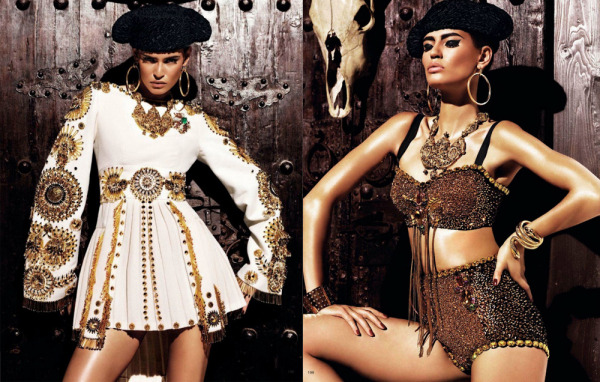
For a long time I've wanted to have a Torero (Matador/Toreador, whatever word you use - bullfighters) costume made.
I don't agree with the cruelty of bullfighting, however you must admit that the traje de luces ("suit of lights") are stunning works of fashion art. It's no wonder that the costumes have permeated high fashion (see above) for a long time.
The amazing John Galliano
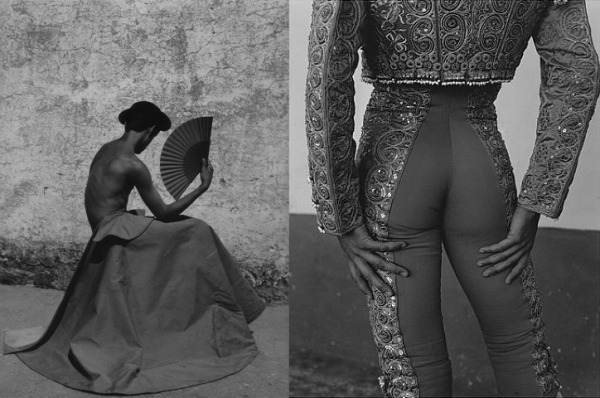
Ruven Afanador's beautiful sexualised photographs of bullfighters
Well, I finally got the costume made, thanks to the wonderful Boom! Boom! Baby!
You might remember she made my half-bride half-groom costume for last halloween.
Although this bullfighter costume was made for halloween, I finally just got around to shooting some self portraits of it!
